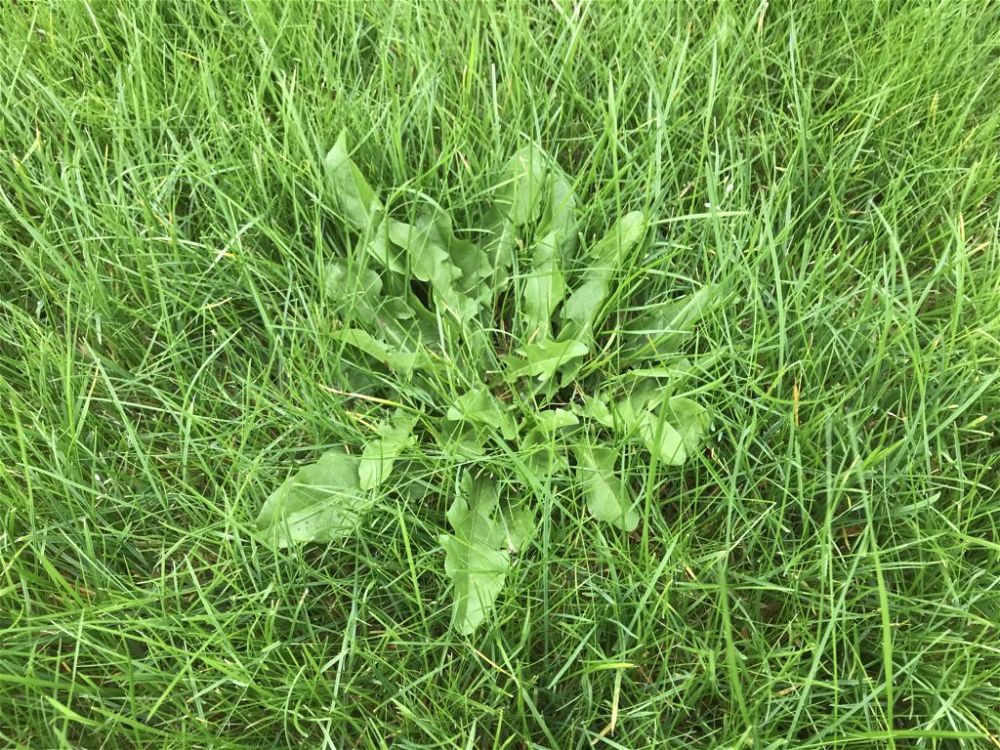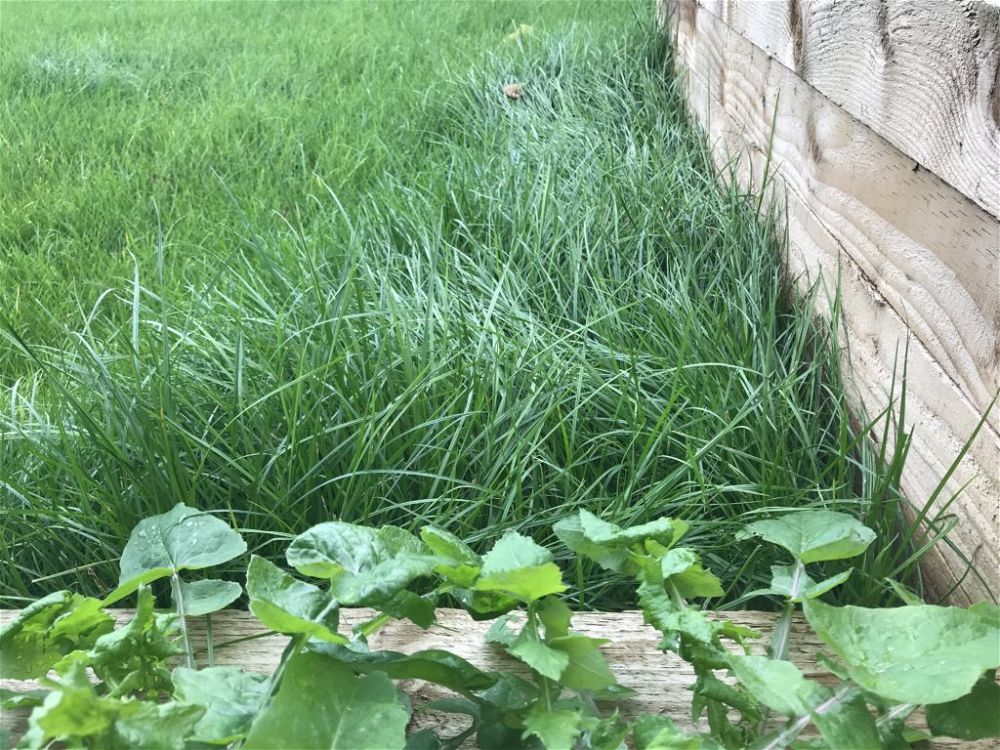
One of the best things about grass is that it grows quickly. But this can also be its detriment!
Left to their own devices, lawns can easily spiral out of control. Even if you simply go on holiday during the warmer months, you may return to find your neat lawn has been replaced by a grassy meadow.
However, fixing the issue isn’t quite as simple as running across your garden with the nearest mower. Lawns can easily get damaged if you hack into them with too much enthusiasm. If you’re worried about damaging your lawn when you cut really long grass, here’s a step-by-step guide on how to manage overgrown grass in the best way.
Things You Should Know Before Cutting Tall Grass
1. It Can Take Longer Than a Day
While it may be tempting to get the job done and dusted, chopping down long grass all at once won’t do your lawn any favours. Since grass stores a ton of nutrients in its long blades, aggressively cutting them down can shock grass and even kill it off completely.
Ideally, before you get started on your trimming project, make sure you’ve got plenty of time over several days and that the weather is on your side.
The best time to cut long grass is during a dry period in spring.
2. Don’t Cut Long Grass in Winter
Generally, you can leave your lawn to its own devices during winter. As long as you’ve given it a final trim in late autumn, you shouldn’t need to cut it at all during the colder months.
If you’ve forgotten to cut your grass before winter, it’s best to wait until spring before getting the mower out. Cutting grass (especially tall grass) in cold conditions will leave it less likely to survive.
Since grass stops growing in winter, leaving it another few months won’t do much harm.
3. Your Lawn Mower May Need Prepping
Cutting tall grass can put your lawn mower through stress. Most equipment can handle all sorts of grass lengths. But some may be a little more sensitive – especially electric devices. It might be a good idea to service your mower before getting started, just in case there are any underlying problems.
If you need to cut a large patch of overgrown grass, try not to continuously mow for long periods. Lawn mowers can quickly overheat, so make sure you take regular breaks to let the mower rest.
Also, make sure the mower’s blades are well sharpened. If you don’t know how to do this, take a look at our page on how to sharpen lawn mower blades. Making a clean, crisp cut with sharp blades will help grass recover better. Blunt blades can shred and chew grass.
4. Some Lawn Mowers are Better Suited for Cutting Long Grass
A lot of mowers feature adjustable cutting heights. However, these can range considerably. The best lawn mower for cutting long grass will have a generous maximum cutting height – somewhere around 60 – 80 mm. This will allow you to gradually cut the grass, rather than having to go too short too quickly.
We’ve actually written a guide on the best lawn mowers for long grasswhich should give you a good idea of what features to look out for.
5. Check for Debris First
It’s all too easy for stones, twigs and other objects to get lost in a meadow.
To protect your lawnmower and make it easier to cut, it’s a good idea to check for any debris that may be hiding in the shadows first.
Tools You Need For Cutting Long Grass
To cut overgrown grass in the best way, you’ll need:
- A cordless strimmer (alternatively, you could use a brush cutter)
- A lawn mower
- A scarifying rake (optional)
Depending on how much revival your grass needs after the hefty cut, you may also need grass seed and a high-quality fertiliser.
How to Cut Very Long Grass – a Step by Step Guide
Once the prep work is done, it’s time to begin cutting your really long grass. Here’s a simple step by step guide to help you get the best results.
1. Skim the Top Layer
It’s never a good idea to remove too much height at once when it comes to your grass – especially if it’s really tall. Since the top leaves store a ton of food, water and nutrition, cutting too much too quickly can strip your lawn of the good stuff – leaving it less likely to recover.
The best way to cut very long grass is to skim off the top layer first, removing no more than a third. You can use a lawn mower, a strimmer or a scythe, depending on how long your grass is and what you find easier.
If you’re using a scythe, make sure you wear protective clothing, like gloves, boots and long sleeve trousers.
2. Leave it to Recover for a Few Days
After the first trim, give your grass a few days to recover. Try to let your grass grow by around a centimetre after the first cut.
Keep an eye on the weather forecast and make sure you don’t leave your grass too long before cutting again. Otherwise, you’ll be back to where you started!
3. Mow Again
Once your lawn has had a chance to recuperate, give it a second cut, but only remove another third off the top. If your grass isn’t too long, you should be able to use a lawnmower this time around.
If your grass is still really long after two cuts, repeat the process of cutting a third and leaving it to recover as many times as needed.
4. Scarify the Lawn
Once you’ve cut your long grass to its ideal height, you may be left with a mossy lawn that’s full of weeds and clumps. If so, you can scarify the lawn to remove the debris and help your grass breathe again.
This may sound scary, but scarifying just means getting rid of any organic matter that could harm your lawn. To do this, use a scarifying rake and work your way methodically across your lawn until you’ve covered all bases.
If your grass looks awful afterwards, don’t worry! This is completely normal. Scarifying isn’t pretty, but it’ll be worth it in the long run. For tips on how to look after your lawn after scarifying, you can check out our detailed post-scarifying lawn care guide!
5. Fertilise
If you’re mowing long grass in spring, now is a great time to fertilise.
By choosing a high-quality lawn feed/fertiliser, you can prevent weeds and moss from returning. Plus, you’ll be giving your grass an added boost of life.
Make sure you follow the instructions and only give your grass the recommended amount. Applying too much fertiliser can quickly kill off your grass.
If there are a lot of weeds or moss on the lawn, you could use a fertiliser that contains weed/moss killer. Alternatively, you might want to consider a separate weed killer and/or moss killer so that you can fertiliser separately, and more frequently.
6. Re-Seed
Grass is highly versatile, so, even if it looks a little deflated after a hefty cut, it should start thriving again in no time.
However, if you notice a few bare patches here and there after scarifying, now is a good time to re-seed.
For the best results, check the grass seed’s sowing instructions and make sure you keep your grass hydrated if the weather isn’t forecasting any rain.
How to Prevent Overgrown Grass
Sometimes, facing overgrown grass is unavoidable – like if you go on holiday for a long time or move into a new home that hasn’t been well kept. However, during other times, there are things you can do to prevent the grass getting too long.
To keep grass at a manageable height, make sure you:
- Cut regularly during spring and summer, without cutting it too short – Depending on how warm the weather is, weekly or fortnightly cuts are best
- Trim your grass before going on holiday – Especially if your trip is during the spring or summer
- Give your grass a final cut before winter – Although the rate of growth will slow down in winter, long grass can turn boggy in cold and rainy conditions
Longer Grass Appeals to Wildlife
If you have the space, and it won’t affect your curb appeal, consider leaving a patch of really tall grass in your garden for the local wildlife. Patches of “wild meadow” are becoming increasingly popular in the garden.
While it may not look as aesthetically pleasing as a neatly trimmed lawn, overgrown grass creates a lovely home for all sorts of critters – including beetles, caterpillars, bees and butterflies. It can even entice a few hedgehogs and squirrels! If leaving a patch of long grass isn’t an option for you, we’ve got more tips about how to attract local wildlife to your garden.


